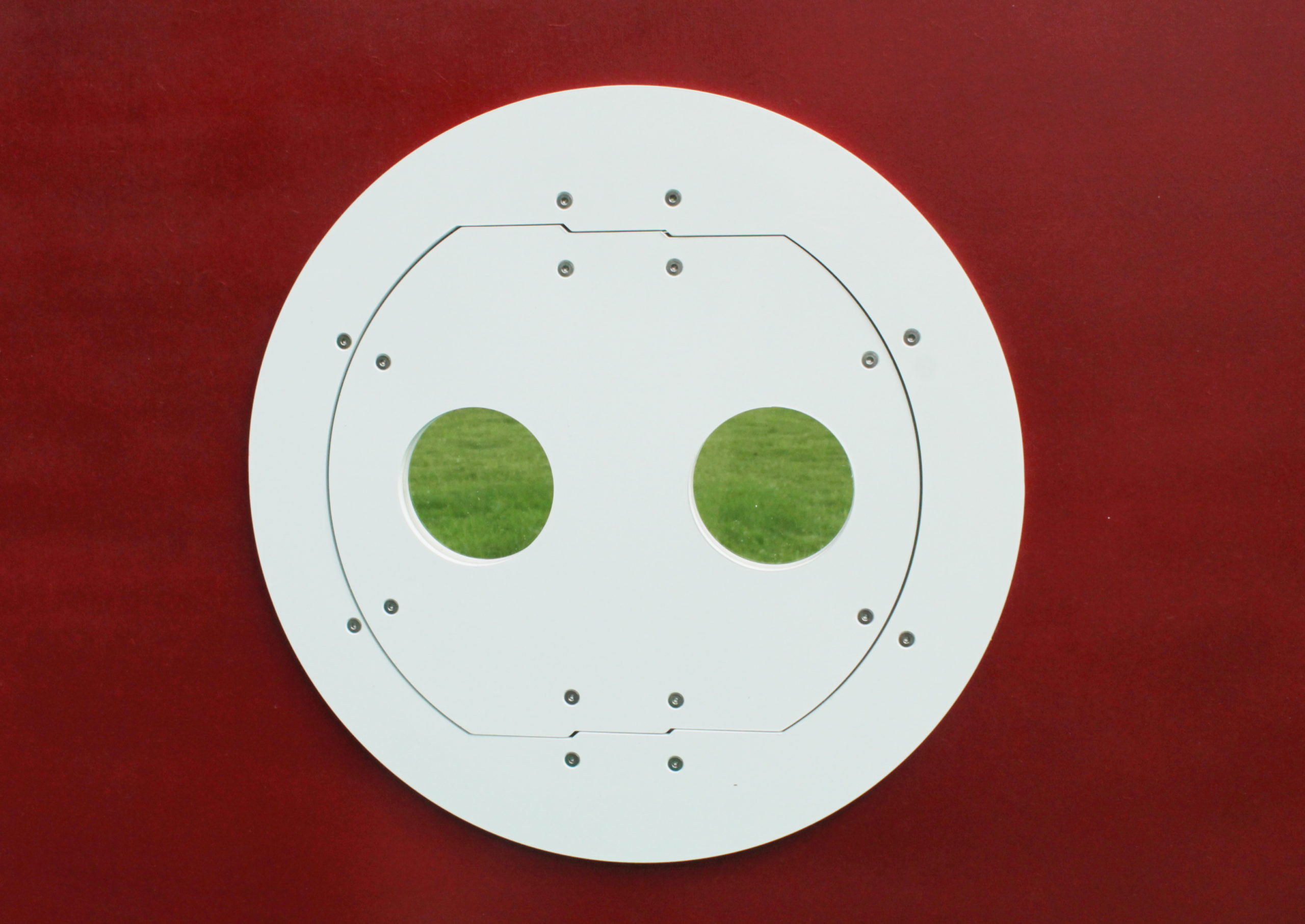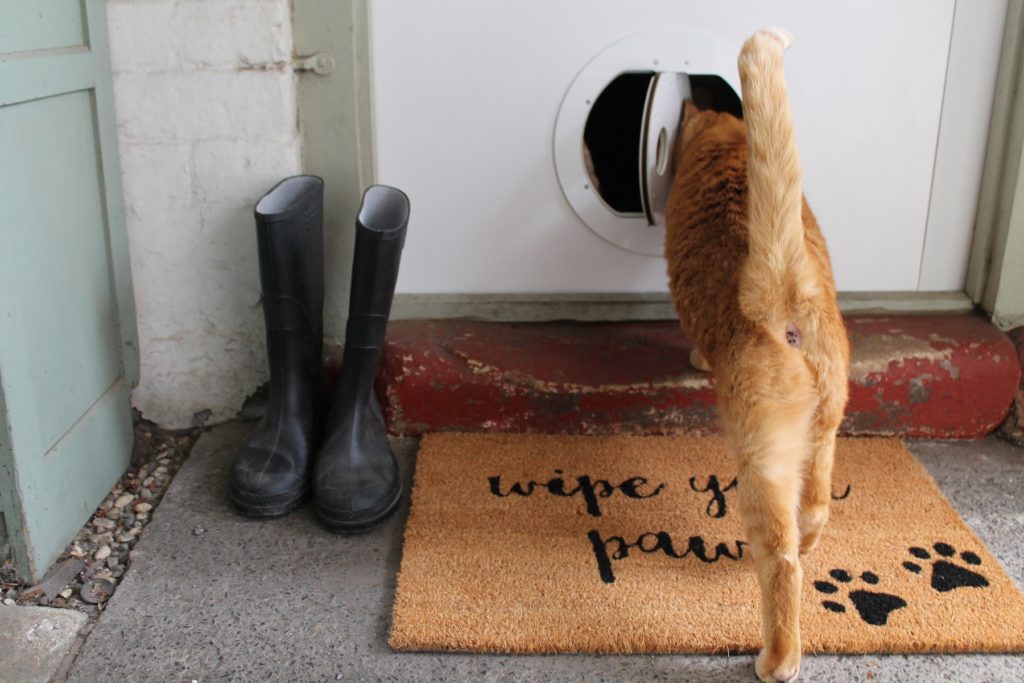Draughtproofing
How does the Petflap work? By using any air flow to shut the flap more tightly.
The Petflap is pressed more firmly shut against its frame with any change in air pressure, whichever side it comes from. High winds outside push the door more shut; a breeze in the house through open windows and doors opening or closing inside the house also push the Petflap more shut.
The secret is in the Petflap‘s assymetric cut: the frame extends slightly further inwards on one side than the other, on opposite sides front and back, giving the door a lip to press against no matter which direction the airflow is coming from. This gives the Petflap an ‘in’ and an ‘out’ side, which cats quickly get the hang of. It’s why the pet access door has its characteristic offset shape.
It’s easy for a pet to open the Petflap as there is no great force for them to overcome. Airflow or a breeze present a broad force that pushes the door shut against the frame. A nose or paw (or hand, if you’re testing it before fitting) provides focussed pressure that allows the door to open easily.

How is this better than standard catflaps?
Most catflaps use magnets to keep the flap shut. Once enough force is applied to either side of the door it will open. This will happen with wind outside blowing against it or even doors opening and closing inside the house that act like a piston of air pressure and pop it open .
Once the magnetic force is overcome a gentle breeze can keep the traditional cat flap or dog flap open allowing cold air in and letting your warm air out. In hotter climates the expensive air-conditioned cool air flies out at the bottom of the door and the warm air pours in.
Some more modern chip access pet doors lock shut so they can’t blow open. These are a bit better but as they depend on opening quickly when the cat approaches, they have gaps all around the thin door plate so they open easily, which means the air can gust round all the time.
Opening the Petflap
No magnets, harsh springs or motors are needed. There is no need for your pet to push against them. Its tail won’t get trapped as the door slams shut.
As your pet doesn’t need to push hard to enter, this is no matching force pushing the door shut behind it. The Petflap‘s gently tensioned pivot will close at your pet’s pace.
No matter how harsh the weather and wind, the door stays draughtproof but opens with a tiny amount of directed force.

Insulating
The Petflap is made of several layers of insulating materials. The pet access flap is 14mm thick. It’s made up of 6mm of tough acrylic-coated ABS plastic, 6mm of sustainable tricoya wood and 6mm thick acrylic windows. Two 1mm EPDM sponge layers help to seal air-flow and quieten the close noise – so no swinging, flapping doors.
The Petflap is currently undergoing thermal value analysis and air leakage testing for the passivhaus market. Generic materials values were used, which give a conservative working U-value of 3.521 W/(m²K). We’ll publish the air leakage results when we have them.
Points to consider
Because we use an ‘in’ and an ‘out’ side, the door hole you need to cut is wider than for most pet doors. Mostly this is not a problem but some expensive composite doors have structural needs and allow only specific areas that can be cut out.
Whether fitting our Petflap or any other form of pet door in walls, glass or doors, we recommend you check with the manufacturer or your builder or fitter for limitations if you have any concerns.
Our standard door is fine even for larger cats but some owners feel their cat needs more room. We do now offer the Maxflap, a larger square shaped option as a door and wall installation. It is entirely made of sustainable tricoya to a total of 20mm thick, and is suitable for small to medium sized dogs too. It is too large to safely fit into glazing
Chip access control is not yet available but we have plans for a revolutionary use of chip access control. This is in development but not yet ready for release. We want it to be designed and implemented properly to work just as well as the rest of our door.
